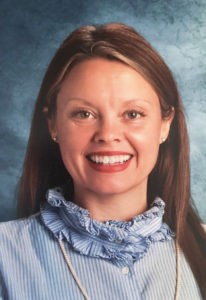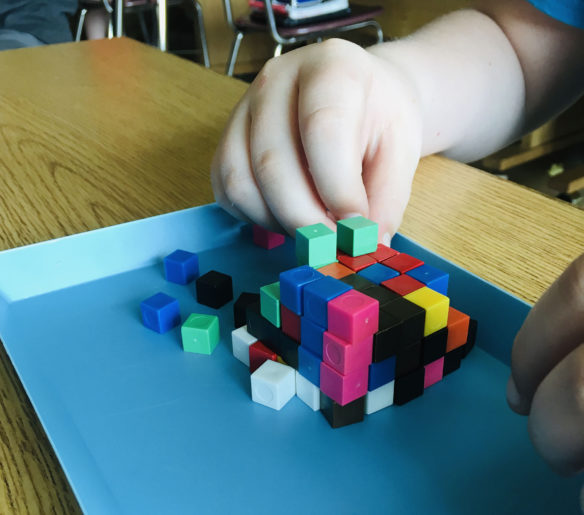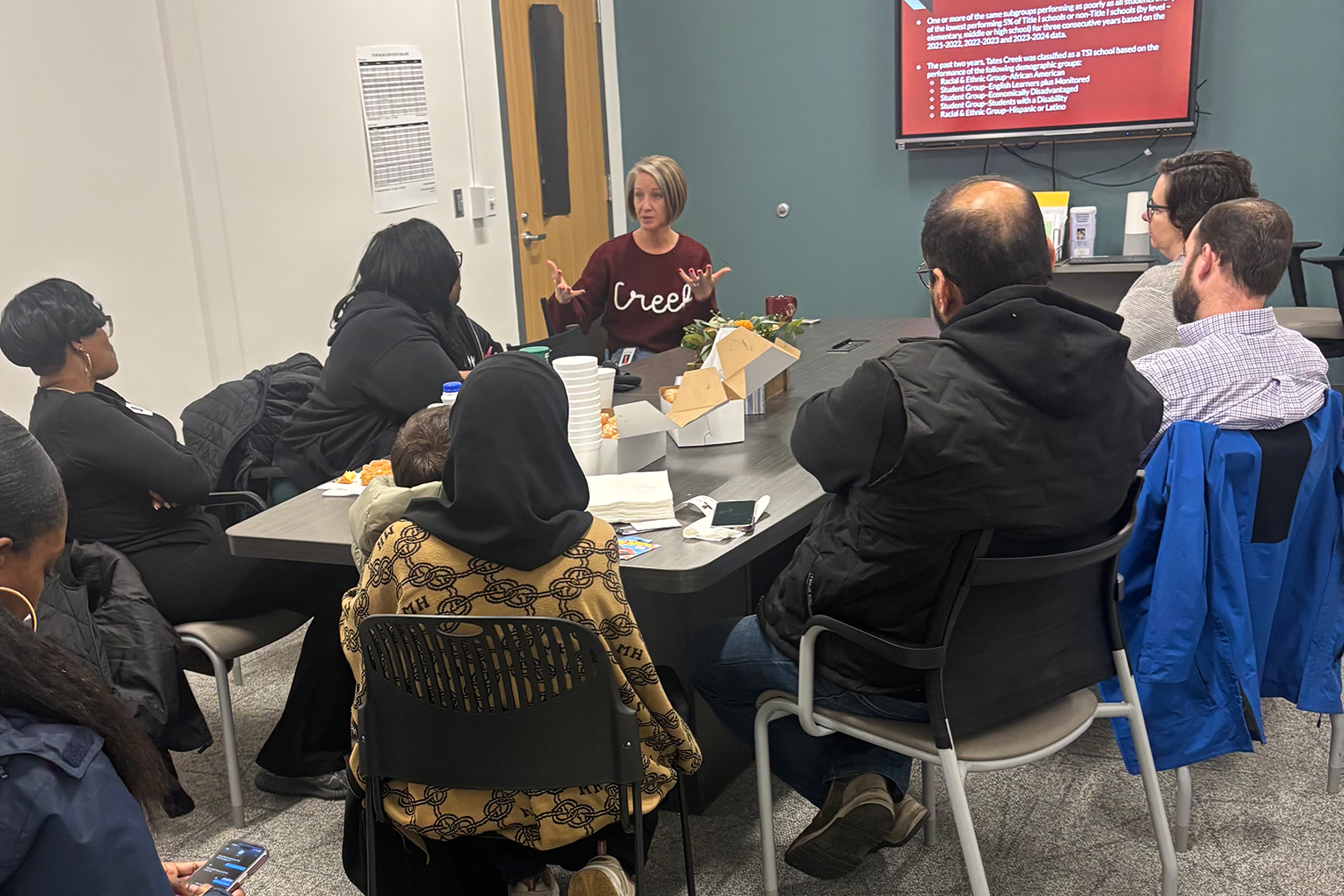
Melanie Callahan
Early literacy is a crucial step in overcoming learning gaps and propelling students toward proficiency. From pre-K to kindergarten, families and schools are on this mission together. The young children who grow into good readers require guidance, training and encouragement from their teachers and leaders.
Research abounds on the topic of early literacy and reading readiness. Buzz words such as “pedagogy” and “milestones” litter the literature and form the landscape for how early learners should progress from infancy to elementary school. The focus for much of this work is on human development and family involvement. The school, however, can play a starring role in building this foundation for young learners. The teacher, likewise, can share the spotlight as they help readers find their mark.
Regardless of curriculum or computer programs, when schools and families work together, readers become leaders. It can be as simple as that.
From birth, both verbal and non-verbal communication skills are vital factors in language learning. Every child will form his or her own language and reading skills in their unique way. The general advancement followed by many children, however, involves four key stages: infant, toddler, preschooler, and kindergartner. At each phase, family and school workers can support a child through engaging activities that enhance language and cognitive growth.
For the past 30 years, a multitude of literacy projects and programs emerged with high hopes of bringing small children up to snuff on national scales and norms. State of the art reading curriculums and software are being developed at a constant pace. Money and resources are consistently offered to the cause of literacy, yet the state still has a long way to go in becoming nationally competitive according to a plethora of sources. Early literacy training is an integral part of this big picture.
Does early literacy actually require all these bells and whistles to be beneficial? As with most tough questions, the answer varies depending on who you ask. Some answers, though, are unswerving. Before young people read, they ought to carry out these important activities: look at books, rhyme, do puzzles and play games, build with blocks and track text. These simple strategies might not work for every child, but they will work for many. Many low-tech options are considered tried and true when it comes to introducing reading to our youngest students.
Looking at books may, on the surface, seem to be a leisure pastime. It is – and it isn’t. Looking at books is a meaningful way for young children to gain print awareness and familiarize themselves with the structure of a book. Kids may take a picture walk through a beautifully illustrated fairytale or poke their fingers through a particularly fascinating pop-up book. Learning to love the way books feel and look can be a vital part of early childhood readiness.
Mind you, kids are often not reading these books, but they are embracing them. Children use fine motor skills as they hold a book in their hands and learn to turn pages on their own. Reading is an act, but it is books that create an experience.
The performance and recitation of rhyme is a second early childhood strategy often perceived as silly or insignificant in the quest for reading proficiency. The fact, however, is that utilization of rhyme can be powerful for emergent readers. Nursery rhymes naturally help young children develop letter sound and phonemic awareness skills. Since mastering letter sounds is a building block of early literacy, this skill set will only enhance a child’s development as a reader.

Melanie Callahan, a 4th-grade teacher at London Elementary School (Laurel County) and the 2020 Kentucky Elementary School Teacher of the Year, uses an activity called Free Builders in her classroom. Critical-thinking games like this one can be used to help Kentucky’s youngest students be prepared for learning how to read.
Submitted photo by Melanie Callahan
Puzzles are an excellent way for children to develop the qualities of problem-solving and critical thinking. By working with puzzles and games, kids of all ages can cultivate trial and error, become impervious to fear of failure and challenge themselves to crack tough questions while at play or in the classroom. Word games, wood puzzles, rhyming baskets and cup stacks are games that make learning fun and functional.
Building with blocks is an additional way for babies, toddlers and even older children to improve gross motor skills and cognitive development. Kids love to manipulate the world around them. Puzzles provide the opportunity to make that experience a reality – even when it is the world of their imagination. Furthermore, when students flip, rotate, remove, switch and stack a set of blocks they are making a physiological connection between their hands and their eyes. They make decisions by envisioning a design and their hands follow suit. The implications can be long-lasting.
Lastly, text tracking is a way for kids to become more self-sufficient as pupils of the printed word. As kids become more fluent with word recognition, they are able to “touch each word” as text is read aloud to them or as they become able to read on their own. Their eyes, brain and mind work together to connect the spoken word to the written word.
This is not a simple act of finger-pointing. Tracking text has been found to increase letter and phonemic awareness, improve comprehension and assist visual and tactile learners in their literacy journey. Many learners need to carry out a physical movement in order to retain reading content, text tracking can provide this opportunity with hands-on experiences and actions.
Early literacy also can be improved through family and school connections. Home visits, after-school tutoring programs and take-home projects can all be incorporated into literacy instruction. Teachers who have conducted home visits often view the experience eye-opening and pivotal for future classroom practice and approaches to instruction. After-school tutoring can be a time for building relationships. In addition, teachers and tutors can explore specific strategies that might not make an impact in a whole-group setting, but offer one-on-one results for young kids.
As Kentucky teachers, we can make the most of each young person’s desire to learn. The work need not be expensive. It need not use worksheets and pre-printed quizzes. The tools need not be high-tech or futuristic. Kids do not always need the bells and whistles. To the contrary, they can experience a practical, grass-roots program that lets organic learning, in a safe space, purely take place.
Melanie Callahan is a 4th-grade teacher at London Elementary School (Laurel County). She is a graduate of the University of Kentucky, received her master’s degree from Bellarmine University and Rank I from the University of the Cumberlands. She is an author and illustrator who is studying leadership and family engagement in education through Harvard University’s Extension School. Callahan is the 2020 Kentucky Elementary School Teacher of the Year.




Leave A Comment